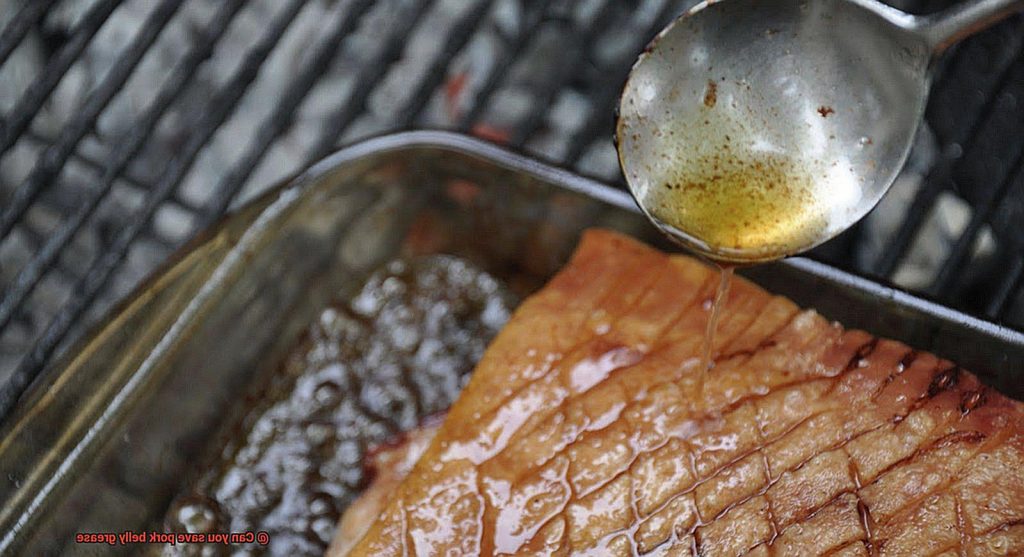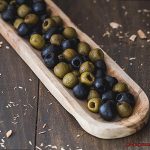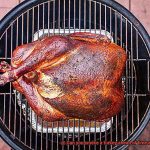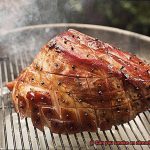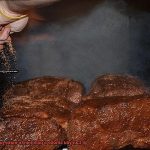Are you a culinary adventurer, always seeking new flavors and ingredients to take your cooking to the next level? Have you ever cooked with pork belly and wondered what to do with the grease that oozes out of it? Well, wonder no more. In this blog post, we’re diving into the world of pork belly grease and answering the question on everyone’s mind: Can you save it?
Pork belly is a beloved cut of meat used in cuisines worldwide. But its grease is often overlooked as a valuable ingredient. That’s where we come in. We’ll show you how saving pork belly grease can elevate your dishes with added flavor, depth, and richness.
But before we get started, let’s go over some basics. We’ll cover why saving pork belly grease is beneficial, how to do it properly, and most importantly, how to store it for future use. And if you’re wondering what to make with all that delicious grease, don’t worry – we’ve got recipe ideas that will make your taste buds dance.
So whether you’re a seasoned chef or just starting out in the kitchen, join us on this journey through the world of pork belly grease. It’s time to take your cooking game up a notch.
Contents
What is Pork Belly?
Pork belly is a mouth-watering and flexible cut of meat that comes from the belly or underside of a pig. It’s a fatty and flavorful cut that can be cooked in several ways, including roasting, braising, smoking, and grilling. It is also a staple ingredient in many Asian dishes, including Korean barbecue, Chinese char siu, and Japanese chashu.
The unique flavor and texture of pork belly make it a popular choice amongst foodies and chefs alike. The meat itself is rich in flavor and has a high fat content, making it perfect for those looking for an indulgent meal. It’s important to note that because of its high fat content, pork belly can be quite greasy when cooked. However, this grease is the natural byproduct of cooking the meat and can be collected and saved for future use.
When cooking pork belly, it’s essential to keep an eye on the grease that is left behind in the pan. This grease can be used to add flavor to vegetables or rice dishes, frying eggs or potatoes, or even as a substitute for butter or oil in baking recipes. Nevertheless, given its high saturated fat content, it’s crucial to use it sparingly and store it properly.
To store saved pork belly grease correctly, strain it through a fine-mesh sieve and transfer it to an airtight container before refrigerating or freezing it. Improper storage can cause the grease to go rancid quickly. Additionally, it’s essential to monitor the heat when using saved pork belly grease to prevent burning. Burnt grease can ruin a dish and have an unpleasant taste.
Benefits of Saving Pork Belly Grease
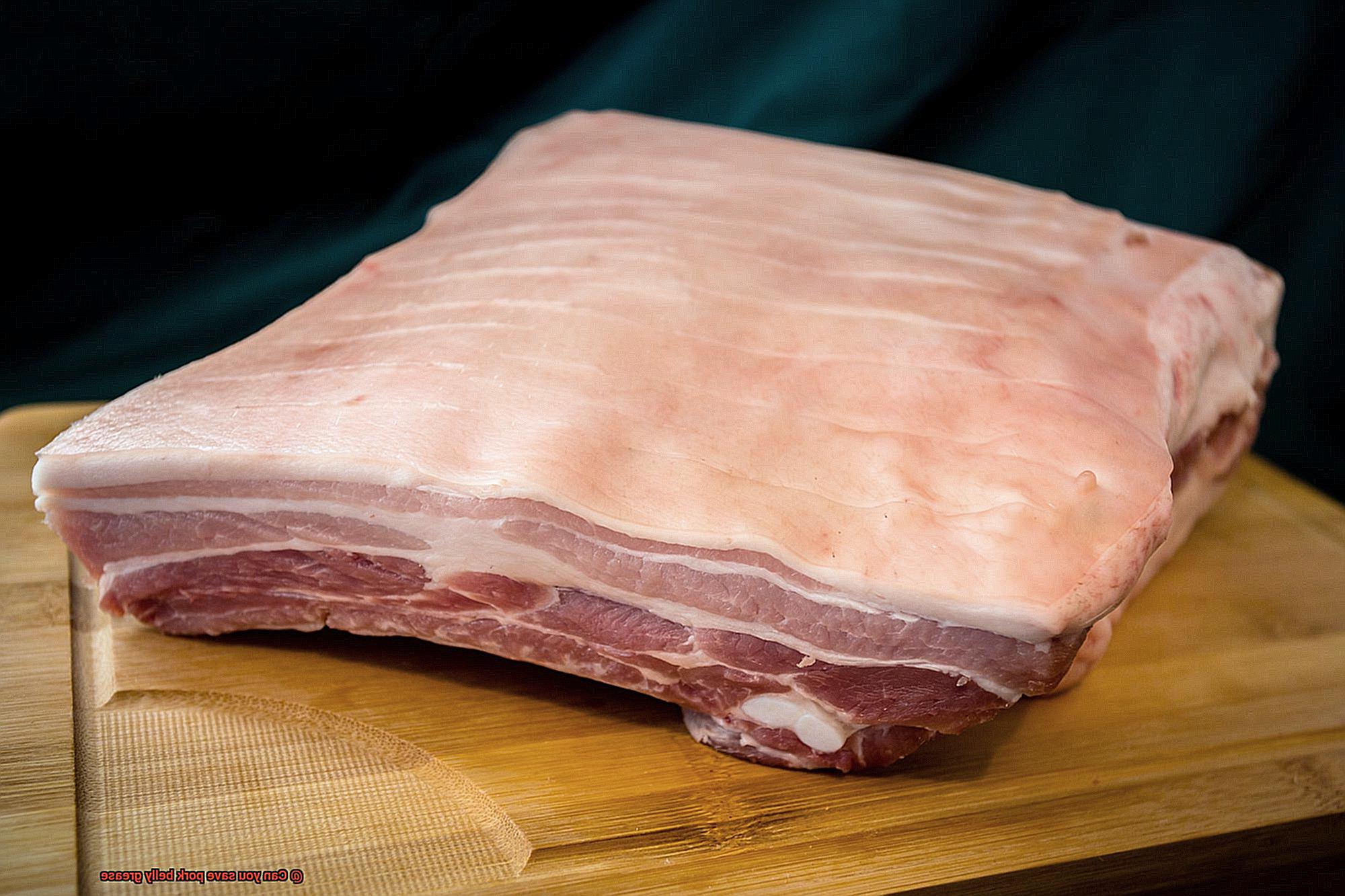
This flavorful and versatile cooking oil is a must-have in your kitchen, and here’s why.
Firstly, pork belly grease has a high smoke point, meaning it can handle high temperatures without burning. This makes it perfect for frying, sautéing, and roasting vegetables. Its rich and savory flavor also adds depth to any dish, whether it’s stir-fry or baked goods.
But that’s not all. Pork belly grease is also a key ingredient in traditional soap making. By rendering the pork fat, mixing it with lye and water, and allowing it to cure, you can create a creamy and moisturizing bar of soap. Not only is this a fun DIY project, but it’s also an eco-friendly option that reduces waste and conserves resources.
Saving pork belly grease can also be a smart financial move. Pork belly is often less expensive than other cuts of meat, and by saving the grease, you can stretch your budget even further. Plus, using it instead of expensive cooking oils or butter can save you money in the long run.
Proper storage is key to ensuring your saved pork belly grease stays fresh. Be sure to store it in an airtight container in a cool, dark place. This way, you’ll always have this magical ingredient on hand for your next culinary creation.
How to Collect and Store Pork Belly Grease
Pork belly is a delicious cut of meat that is beloved by many for its rich flavor and succulent texture. But did you know that the grease left behind after cooking pork belly can be collected and used to enhance the taste of many dishes? In this post, we will guide you through the steps of properly collecting and storing pork belly grease.
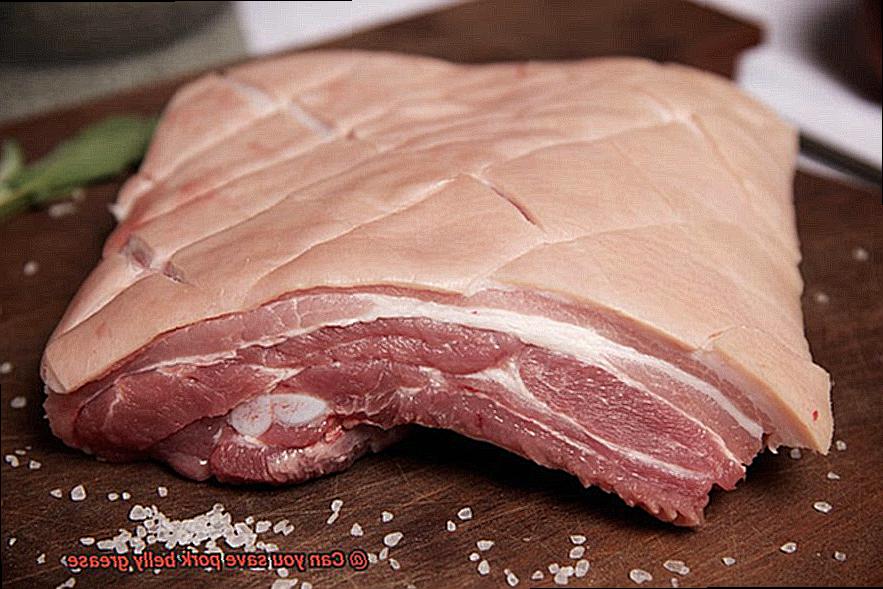
Step 1: Cook the Pork Belly to Perfection
Before you can collect pork belly grease, you need to cook some high-quality pork belly. When cooking pork belly, it’s essential to ensure that it’s cooked until it’s crispy, golden brown, and has a tender and juicy interior. This is important because the quality of the meat will affect the quality of the grease.
As the pork belly cooks, the fat will render and collect in the pan. Once the pork belly is fully cooked, remove it from the pan and pour the liquid into a heat-safe container. You can use a slotted spoon to skim off the grease from the top or let it cool until it solidifies on top, then scoop it off.
Step 2: Store the Pork Belly Grease Properly
After collecting the grease, it’s important to store it correctly to keep it fresh and safe to use. Transfer it to a clean, dry container with a tight-fitting lid. Glass jars or plastic containers with screw-on lids work well for this purpose. Labeling the container with the date of collection is crucial for maintaining freshness.
It’s also important to store pork belly grease in a cool, dark place. Direct sunlight can cause oxidation and rancidity, which can spoil the grease. A pantry or cupboard away from direct sunlight is an ideal storage location.
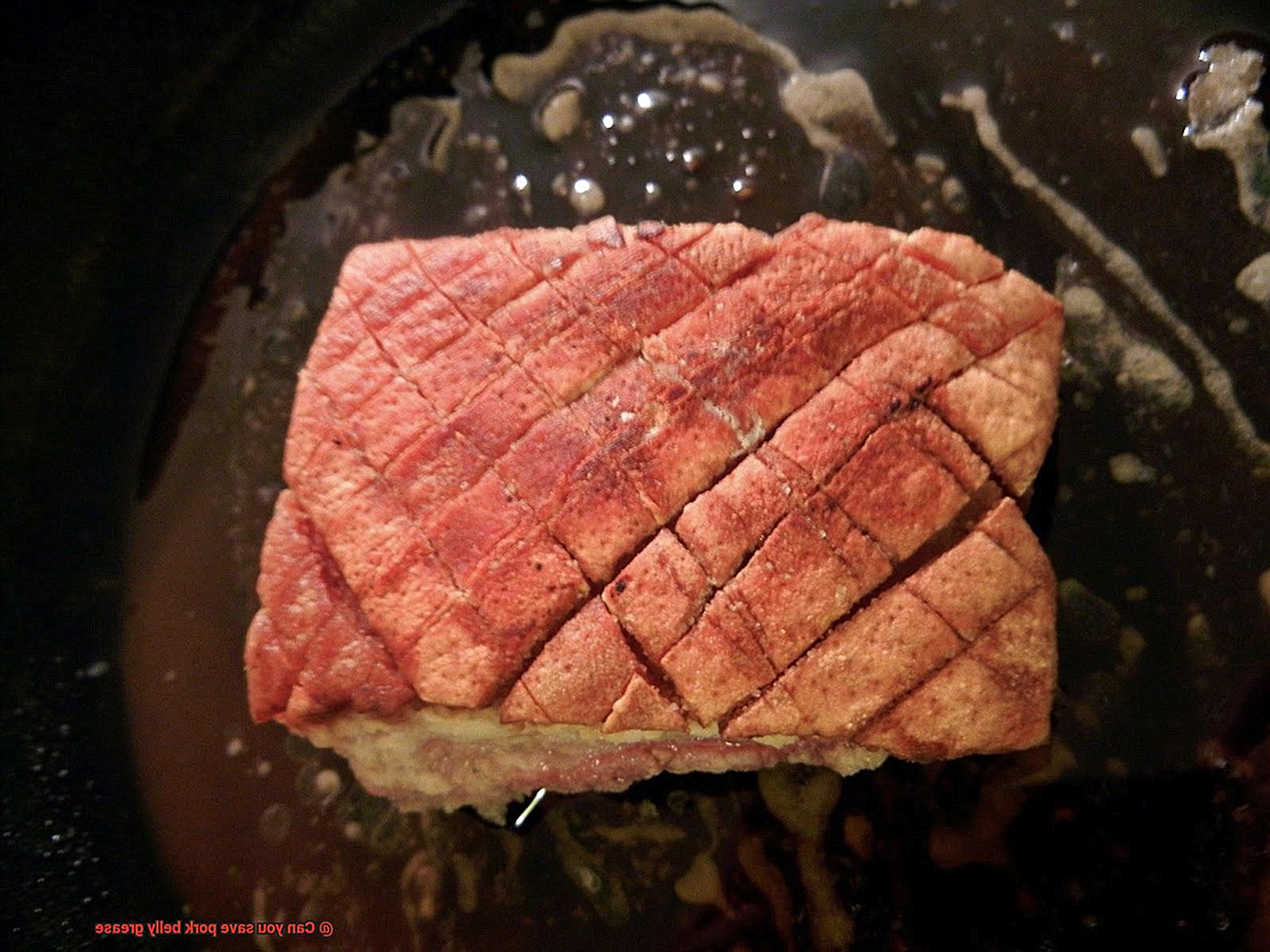
Step 3: Use Within a Few Weeks
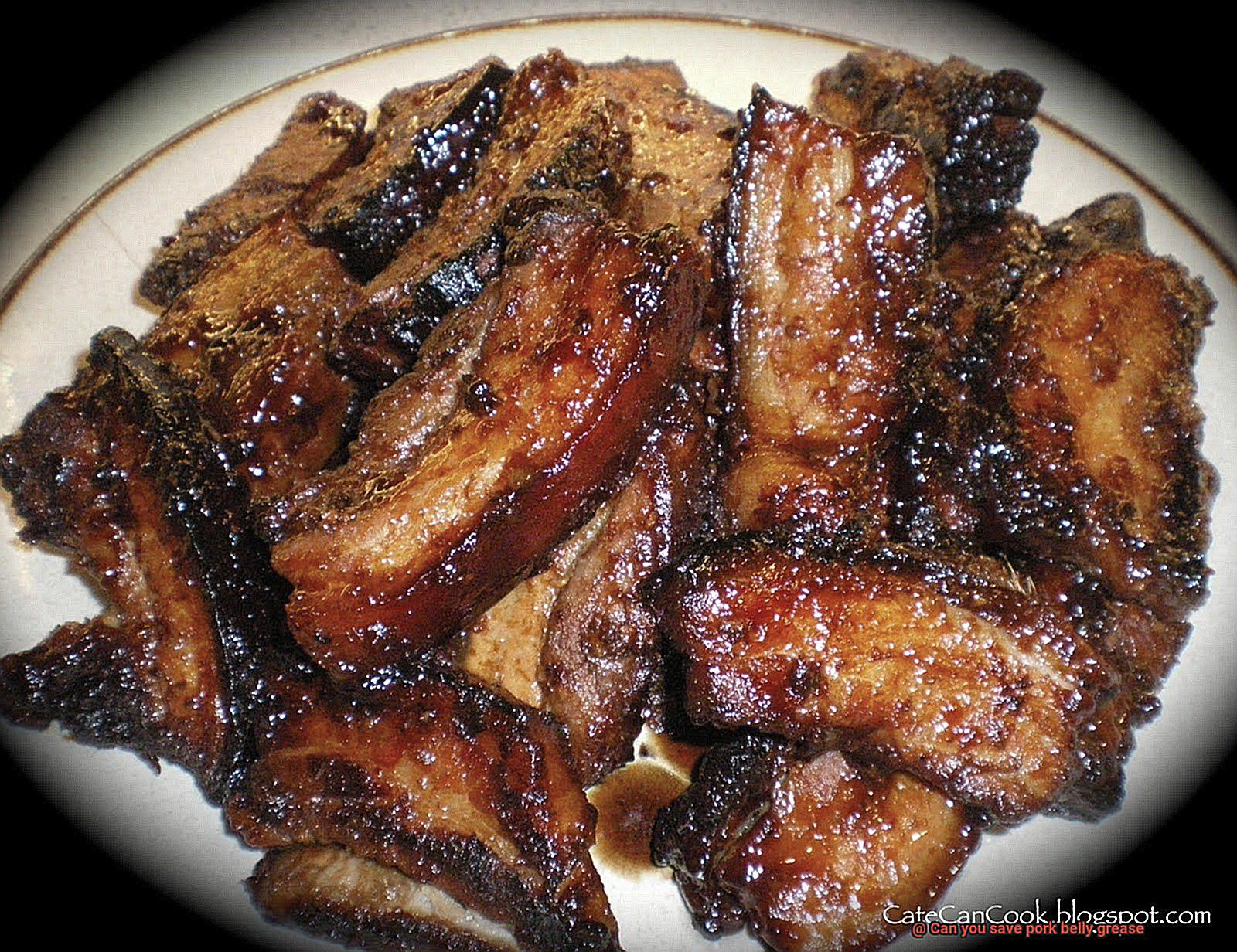
Pork belly grease has a shorter shelf life than other types of cooking oils. To preserve its freshness, it’s best to use it within a few weeks of collection. If you plan on storing it for more extended periods, consider keeping it in the refrigerator or freezer. Pork belly grease can last up to six months in the refrigerator and up to a year in the freezer.
Step 4: Experiment with Pork Belly Grease
Pork belly grease is a versatile ingredient that can add flavor and richness to many dishes. Besides frying eggs or potatoes, try using it to flavor vegetables, rice dishes, or soups and stews. It can even be used as a substitute for butter or oil in baking recipes.
Step 5: Discard if Off Smell or Taste
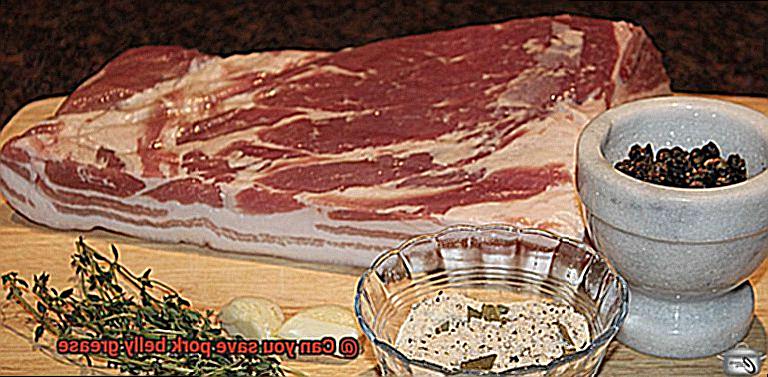
It’s crucial to discard pork belly grease if it has an off smell or taste or shows signs of mold growth. This is important for your safety and health.
How to Use Pork Belly Grease in Cooking
Pork belly grease is a versatile ingredient that can add a rich and savory flavor to many dishes. It’s a hidden gem that home cooks can use to elevate their cooking game. Here’s a breakdown of how to use pork belly grease in cooking:
Strain the Grease for Optimal Flavor
Straining the pork belly grease is essential before using it in your cooking. This process removes any bits of meat or debris, ensuring that the grease is clean and free of impurities that could affect the flavor of your food. You can use a fine-mesh sieve or a cheesecloth to strain the grease.
Use as a Cooking Oil for Fried and Sauteed Dishes
Pork belly grease is an excellent substitute for other cooking oils or fats, especially when frying or sautéing. Its high smoke point makes it ideal for high-heat cooking methods, while its rich flavor adds depth to dishes. Try using it to fry eggs, sauté vegetables, or make a crispy texture for fried chicken.
Substitute for Butter or Other Fats
You can also use pork belly grease as a substitute for butter or other fats in recipes. It’s a great option for making roux’s for sauces or gravies. The rich flavor adds an extra layer of depth to your dish.
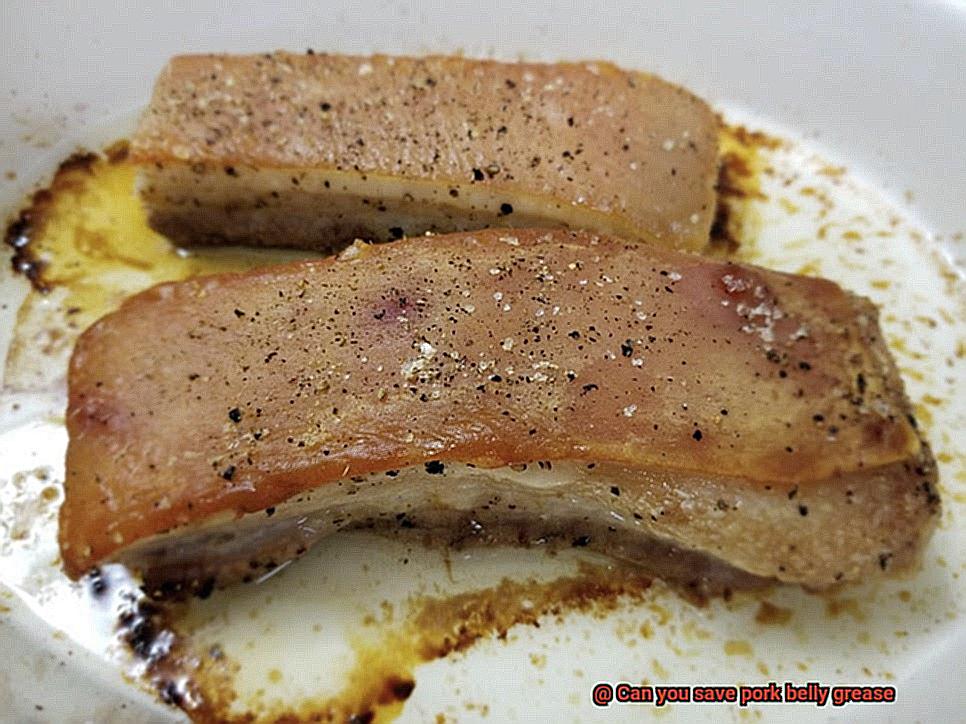
Add as a Flavoring Agent
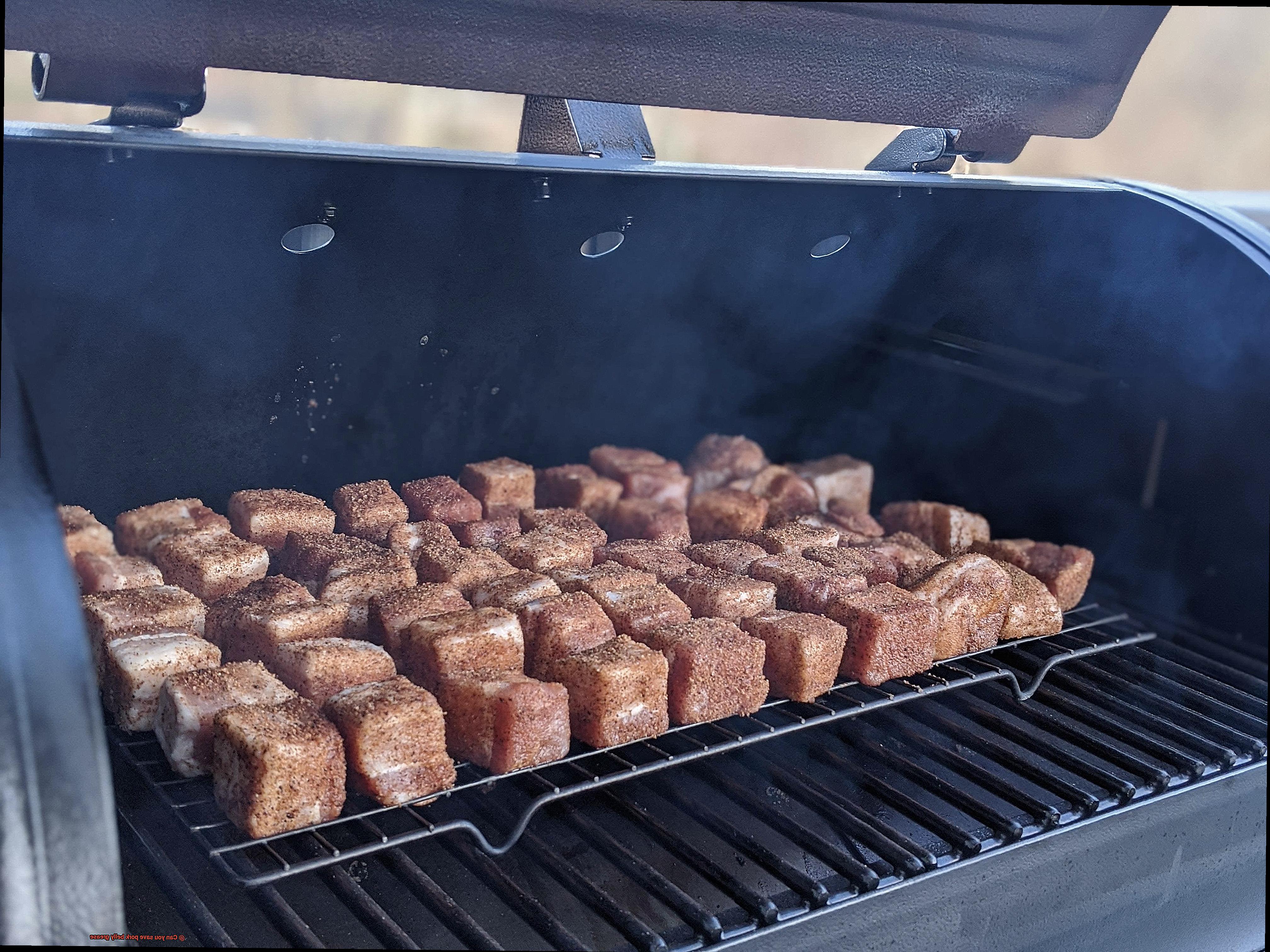
A little goes a long way when it comes to pork belly grease as a seasoning agent. Adding just a spoonful or two to soups, stews, and braises gives them a rich, meaty flavor. It’s also great for rubbing onto meats before cooking, adding depth and richness to the final dish.
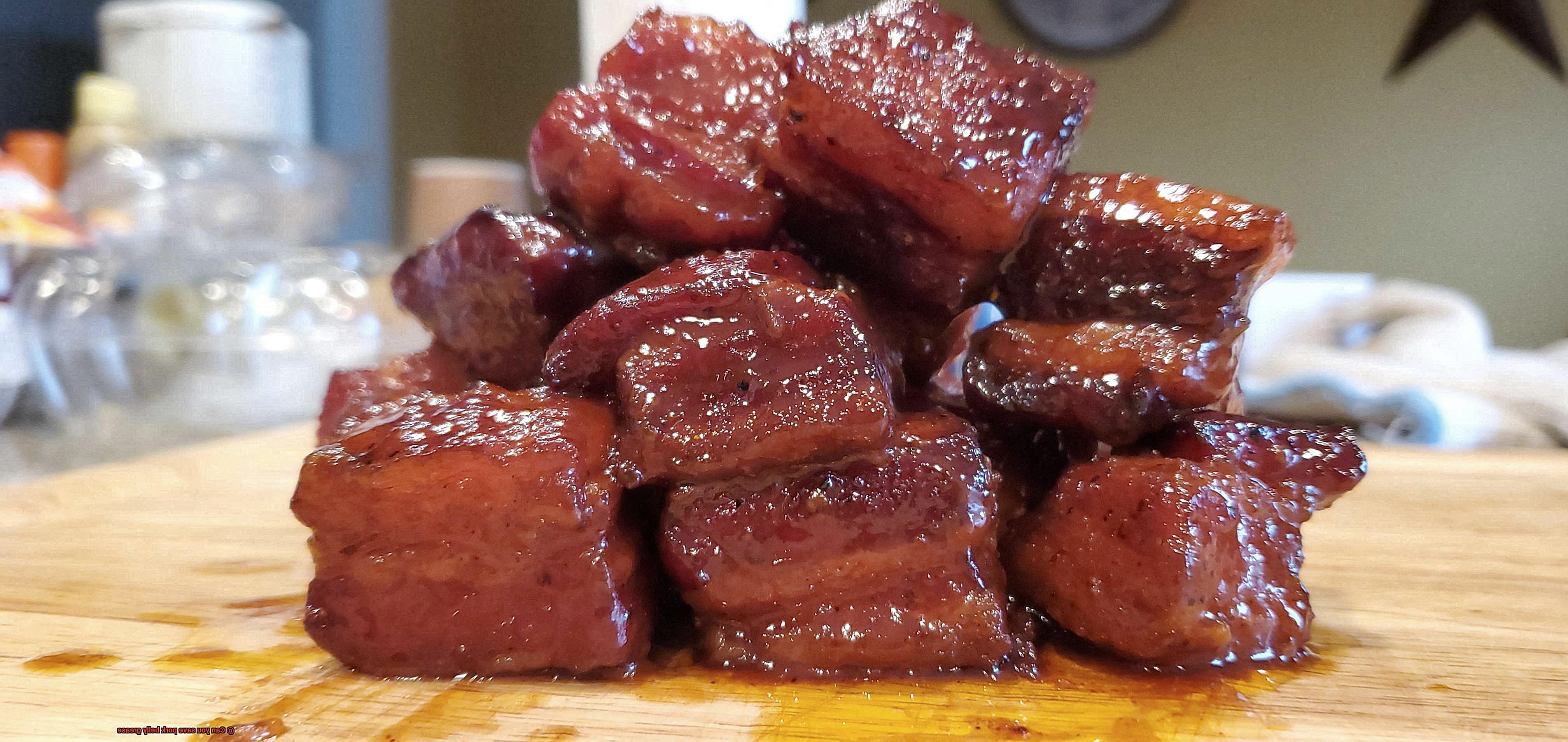
Use Sparingly
As pork belly grease is so rich and flavorful, it’s essential to use it sparingly in your cooking. A small amount can go a long way in enhancing the taste of your dish. Be sure to adjust the amount based on your personal taste preferences.
Moderation when Using Pork Belly Grease
Before you start pouring it into everything, let’s talk about why moderation is crucial when using this ingredient.
Pork belly grease is high in saturated fats, which can lead to health problems like obesity, high cholesterol, and heart disease. But don’t worry, you can still enjoy the delicious flavor of pork belly grease by using it in moderation.
To practice moderation, use pork belly grease sparingly in your cooking. A small amount can go a long way in enhancing the taste of your dishes. Plus, you can always try healthier cooking oils like olive oil or coconut oil.
Storing pork belly grease properly is also important. After straining it, store it in an airtight container in the refrigerator or freezer. Make sure to label the container with the date you saved it so that you can keep track of its freshness.
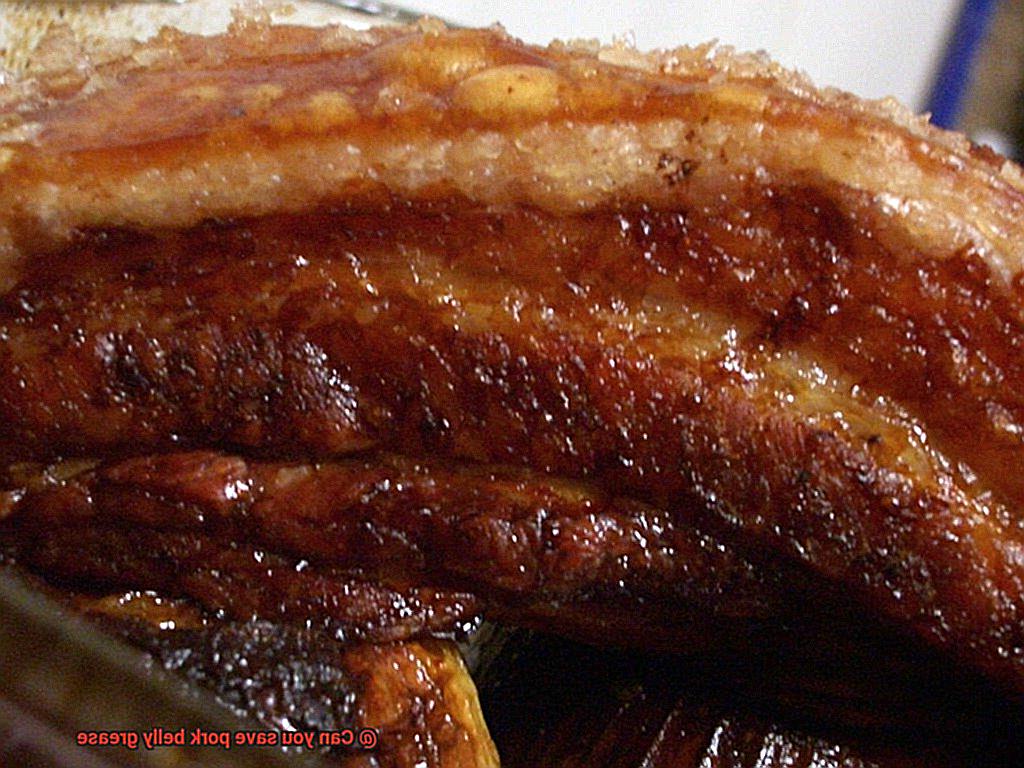
In summary, while pork belly grease can elevate your dishes to new heights, it’s important to use it in moderation and store it properly for optimal health benefits. Remember to enjoy that delicious flavor, but keep things in moderation. Here’s a quick checklist to help you remember:
- Use pork belly grease sparingly
- Try healthier cooking oils like olive or coconut oil
- Store the grease properly after straining
- Label the container with the date you saved it
How to Avoid Burnt Grease
Pork belly grease is a versatile ingredient that can add flavor to any dish. However, burnt grease can ruin your food and pose a health risk. To avoid this, here are some tips on how to avoid burnt grease when saving pork belly grease.
Control the Heat
Maintaining the right temperature is crucial when working with pork belly grease. High heat can cause the grease to burn quickly, ruining its flavor and potentially emitting harmful chemicals. We recommend cooking pork belly at a medium heat setting and monitoring the temperature throughout the cooking process.
Use Non-Stick Cookware
Using non-stick cookware can prevent the pork belly from sticking to the surface and burning. This will also make cleaning easier. If you don’t have non-stick cookware, adding a little oil or cooking spray can help prevent sticking.
Clean Your Cookware
Leftover bits of food and grease can accumulate in your cookware and lead to burnt grease during future cooking sessions. Avoid this by cleaning your cookware after each use with a grill brush or scraper to remove any excess debris. Follow up with a damp cloth to wipe it clean.
Strain Before Storing
Straining the grease before storing it removes any meat or debris that could cause it to burn later on. Use a fine mesh strainer or cheesecloth to strain the grease directly into a clean container.
Store Properly
Proper storage is essential for maintaining the quality of pork belly grease. Store it in an airtight container in the refrigerator or freezer to prevent it from going rancid or developing an off-flavor, which could lead to burnt grease when cooking with it later on.
Signs of Spoiled Grease
Spoiled grease not only poses a risk to your health but can also negatively impact the taste of your dishes. To avoid any potential hazards and ensure the best flavor, let’s dive into the signs of spoiled pork belly grease.
First and foremost, trust your sense of smell. A rancid or sour odor is a clear indication that the pork belly grease has gone bad and should be discarded immediately. Additionally, mold or discoloration in the grease indicates that bacteria has started to grow, posing a serious health hazard and rendering it unsafe for use.
Texture and consistency are also key indicators of spoiled pork belly grease. Spoiled grease can become thick and gloopy or runny and thin. Separation of the fat and oil in the grease is another sign that it has been sitting around for too long and is no longer safe to use.
Lastly, be mindful of any strange flavors in your food after using pork belly grease. While some fats may impart a subtle flavor to your dishes, spoiled grease will have a much more pronounced and unpleasant taste. If you notice any off-flavors in your dishes, it’s best to stop using the grease and discard it.
To summarize, here are the key signs of spoiled pork belly grease to keep an eye out for:
- Rancid or sour odor
- Mold or discoloration
- Changes in texture or consistency
- Strange flavors in your dishes
aenbA1cTYEo” >
Conclusion
To sum it up, pork belly grease is not only a delicious byproduct of cooking pork belly, but also a valuable ingredient that can be utilized in a variety of ways. Whether you’re looking to add some extra flavor to your dishes or want to experiment with soap making, pork belly grease can do the trick.
However, it’s important to remember that moderation is key due to its high saturated fat content. Proper storage is also crucial for maintaining its freshness and avoiding any unwanted burnt flavors during cooking. By following the easy steps outlined in this article, you can collect and store your pork belly grease safely and effectively.
It’s essential to use your senses when dealing with spoiled pork belly grease. Any rancid smell, mold or discoloration, changes in texture or consistency, or strange flavors in your dishes are all indications that the grease has gone bad.
So, why not give this versatile ingredient a try? Whether you’re an experienced chef or just starting out in the kitchen, exploring the world of pork belly grease can take your cooking game to new heights.

